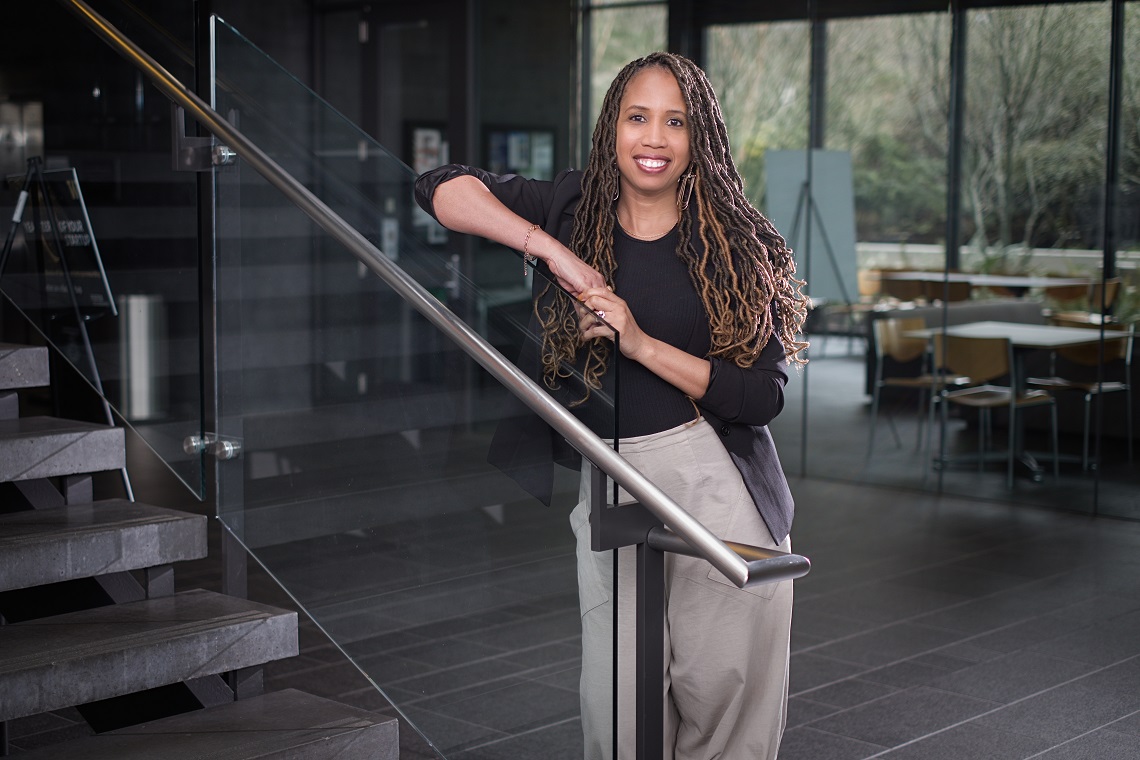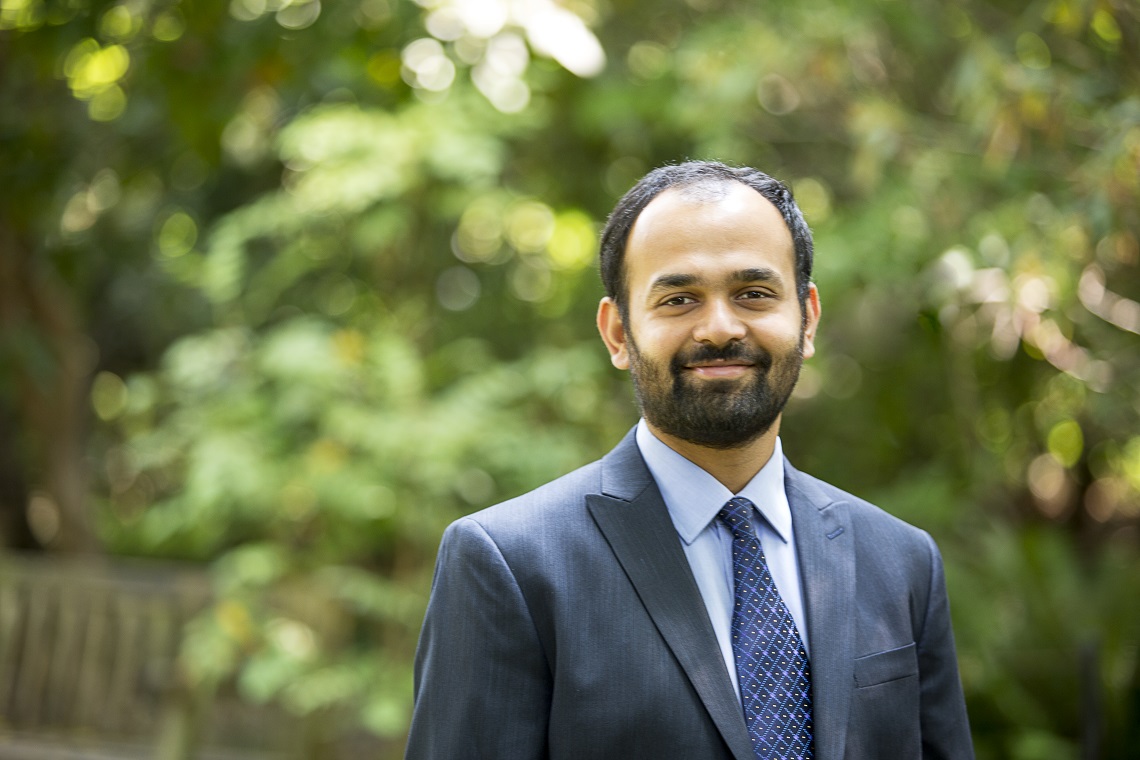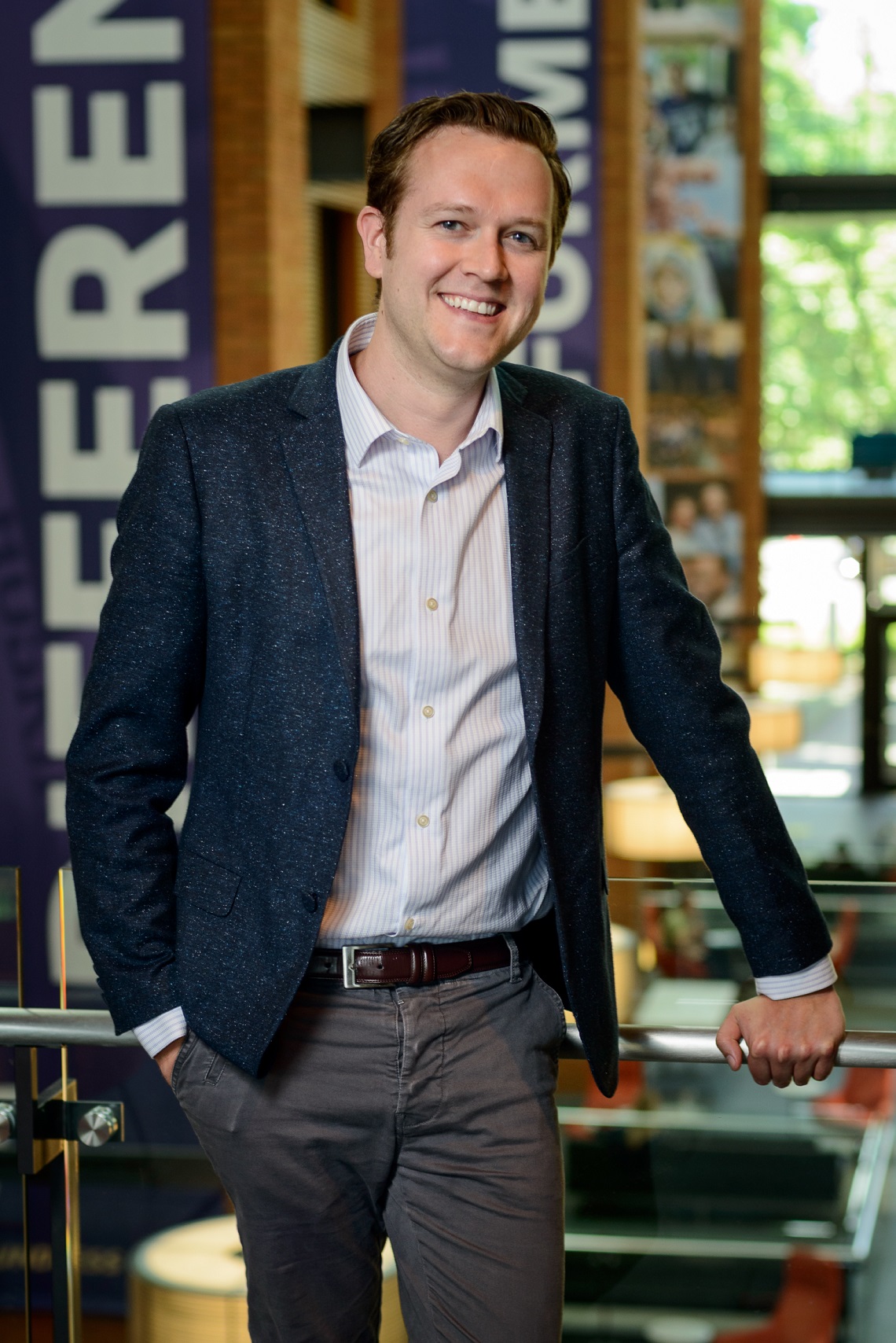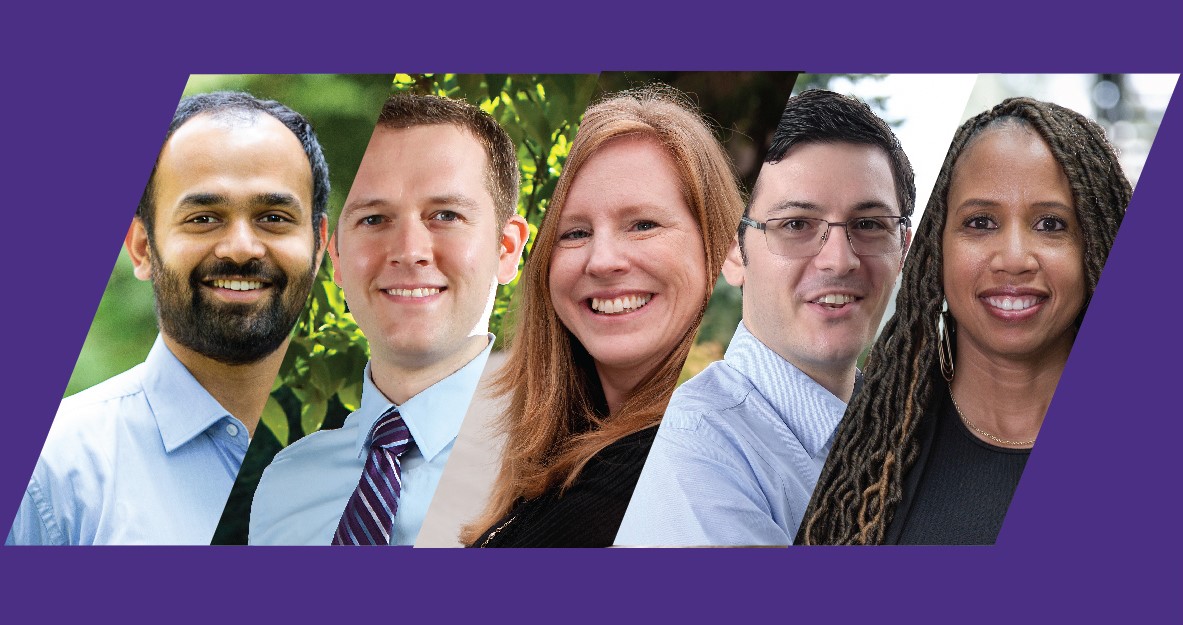Foster Insights
Foster School faculty share research revelations that can help build better work environments
We spend half—if not more—of our waking hours at work. So we all have a vested interest in improving the environment in which we spend all those precious hours.
The UW Foster School of Business does, too. And this very topic was at the heart of Foster Insights, a special public event that the school presented at Town Hall Seattle in May.
“Foster Insights is about creating better workplaces and better lives,” said event organizer and host Chris Barnes, a professor of management and Evert McCabe Endowed Fellow at the Foster School.
Five of his colleagues who study various aspects of organizational behavior—Stacia Jones, Abhinav Gupta, Ann Schlosser, Andrew Hafenbrack and Ryan Fehr—offered expert guidance to a more effective and fulfilling work life in a session that married the empirical observations of a TED Talk with the kind of personal storytelling you might hear on The Moth. The topics of their evidence-based advice ranged from activism to gratitude to online authenticity to mindfulness in the workplace.
Corporate progress
Opening the show, Stacia Jones traced the unbroken history of racial inequity in America from enslavement to emancipation to Jim Crow to Civil Rights to Black Lives Matter—all through the genealogy of a Black girl born, into humble circumstances, in 1975. That girl grew up to become Stacia Jones, Esq., lawyer, vice president and global head of inclusion, diversity, equity and action at Lululemon, and the Foster School’s first Dean’s Impact Scholar.

But she did so against long odds, and initially feeling she needed to assimilate for success, distance herself from her Blackness. “I see race through the prism set up in the years before I was born,” said Jones, “a prism that was reinforced by the law and racism.”
Offering statistical evidence of the systemic racial inequity that has persisted even through generations of societal progress and progressive legislation, she proposed that real change will require the involvement of a power perhaps greater than code or culture: business.
“We need more to bring about our collective liberation from a past that is fraught by discrimination and a present that is beleaguered by bias,” Jones said. “The more we need, I posit, can come in large part through corporate action and corporate diversity, equity and inclusion programs.”
She argued that corporations can change hearts and minds, set new standards and expectations for society at large. “They can set the discussion for race and social justice issues, they can decide to dismantle the systems and institutions of oppression,” Jones said.
More and more, she argued, are doing just that: “Corporations are listening, and they are acting. And actually changing policy and practice inside and then going out and taking public stances outside.”
Insider Activism
Of course, corporations—created to produce profit—may not always drive social progress of their own devices. Sometimes, it takes a push from within.

Employee activism is familiar territory for Abhinav Gupta, an associate professor of management and Michael G. Foster Endowed Fellow. He cited a recent survey that found 75% of corporate employees believe they are right to speak out against their employer, and 38% have engaged in activism themselves—on climate change, gender pay equity, diversity and inclusion, LGBTQ+ rights, animal welfare… The list goes on and on.
Drawing from a career examining the causes and effects of organizational ideology, Gupta identified a set of best practices for employees who wish to drive meaningful change from the inside—without doing harm to their own careers:
- Know the organization – leverage your unique understanding of both the formal power hierarchies and informal social networks that exist inside your company.
- Frame the issue – communicate the problem, why it matters and the most effective solution.
- Repurpose resources – find creative ways to deploy limited time, money and people-power.
- Leverage benchmarks – exploit the fact that some corporate decisions are based on what competitors and high-status contemporaries are doing. Position social action as a competitive advantage.
“These four strategies can be thought of as a playbook of sorts,” Gupta said. “(They) are fairly straightforward and low cost. Yet they can allow employees to get what they want without antagonizing their employers. In so doing, they can allow employee and employer to come together to create social good.”
Authenticity Online
Shifting gears, Ann Schlosser, a professor of marketing and Evert McCabe Endowed Fellow, connected her 25-year explorations into the dynamics of online interaction—and the revelations that have grown ever more essential now that a global pandemic has propelled a new era of remote work and virtual collaboration.

One particularly salient suite of studies has determined whether we are more likely to speak our minds or follow the crowd when interacting with groups online.
Early studies, from the infancy of the commercial Internet, established a tendency to be more authentic online than in-person—freer to share unique ideas, beliefs and opinions, regardless of their reception from the group. But that was back in the days when being online conveyed a sense of anonymity.
Times have changed. Today, our online presence is anything but anonymous. Likewise, Schlosser has found that our inclination to speak freely online has receded. Within the modern Zoom meeting, discussion board or Teams chat, we are more likely to suppress unique opinions and ideas and more likely to present a version of ourselves that will be accepted. Liked.
The reason, Schlosser said, is rooted in the fundamental human desires to belong, to be validated and to see ourselves in a favorable light.
“…People often conform and say what is common rather than sharing what is unique,” Schlosser said. “As more and more people say what is common and what seems to be popular, the pressure to suppress and silence unique information intensifies.”
She urged managers to encourage their team members to share their unique perspectives by asking for specific information or input, inviting and validating diverse and unique perspectives and ensuring that those who express them feel good about themselves afterward.
Moments for Mindfulness
In 2018, Andrew Hafenbrack co-wrote a New York Times op/ed that incited a virtual mob of irate mindfulness meditation fans, including new media maven Arianna Huffington, inspirational author Deepak Chopra and NBA legend Phil Jackson.

His sin? Daring to identify a downside of the calming ritual practiced by individuals and organizations across the western world as a cure-all for the stresses and strains of modern life.
Ironically, Hafenbrack, an assistant professor of management and organization at Foster, is himself a practitioner of mindfulness meditation. And much of his research has documented its many positive effects in the workplace.
But with mindfulness becoming big business—and being adopted by most corporations as a cheap means of reducing anxiety and increasing productivity—he also warned that meditation could be considered an aspirin pill, not a panacea: effective for use in specific situations only.
“Even though many people think you have to meditate for 45 minutes every day to get benefits, small amounts of meditation in specific situations can change your life. Often for the better, but occasionally for the worse,” he said. “You just have to know when is it helpful and when isn’t it.”
Integrating his and other studies, Hafenbrack offered a clear user’s guide for mindfulness in the workplace.
“Mindfulness is likely to help when your task requires focus on the present without getting distracted, calmness, positive emotions or self-awareness,” he said. “However, mindfulness is unlikely to help when a task requires focus on the past or future, high energy, negative emotions (like competitiveness), or it requires thinking a lot about other people.”
Hafenbrack suggested that there is, however, one universal benefit of mindfulness meditation: “It’s a powerful tool to help us turn our minds off at the end of the day to fall asleep.”
The Gratitude Gap
Closing Foster Insights, Ryan Fehr introduced one of the least expensive, most expansive interventions that can create a healthier workplace: cultivating gratitude.

Fehr, an associate professor of management and Michael G. Foster Endowed Fellow, acknowledged that many of us avoid expressing gratitude at work out of concern that it will make us appear less competent, suspicion that it won’t make an impact, or because we’ve simply never developed the habit.
He cited a recent poll in which 90% of respondents expressed a belief that gratitude has a positive impact in the workplace. Moreover, 66% of people surveyed—and 76% of Millennials—said they would leave their job if they didn’t feel appreciated. On the other hand, 60% of those same people reported they express gratitude at work rarely or never.
“There’s a pretty big gap between the amount of gratitude that we hope to see in the world,” said Fehr, “and the amount of gratitude that actually exists.”
To bridge that gap, he framed the solution on inward and outward pillars.
Inward pillars include understanding the impact, building a habit of reflection and sharing gratitude conversations with others.
Outward pillars include understanding that appreciation (valuing the person as a whole) is greater than recognition (which is transactional), showing appreciation in many ways (affirmation, quality time, acts of service, even tailored gifts on occasion), and accepting gratitude from others with grace.
“If you’re looking to cultivate gratitude as a leader in an organization, it’s very important to set the tone,” Fehr said. “Number one, you have to treat employees with dignity and respect. Number two, you have to be a role model, showing gratitude and expressing appreciation yourself.”

